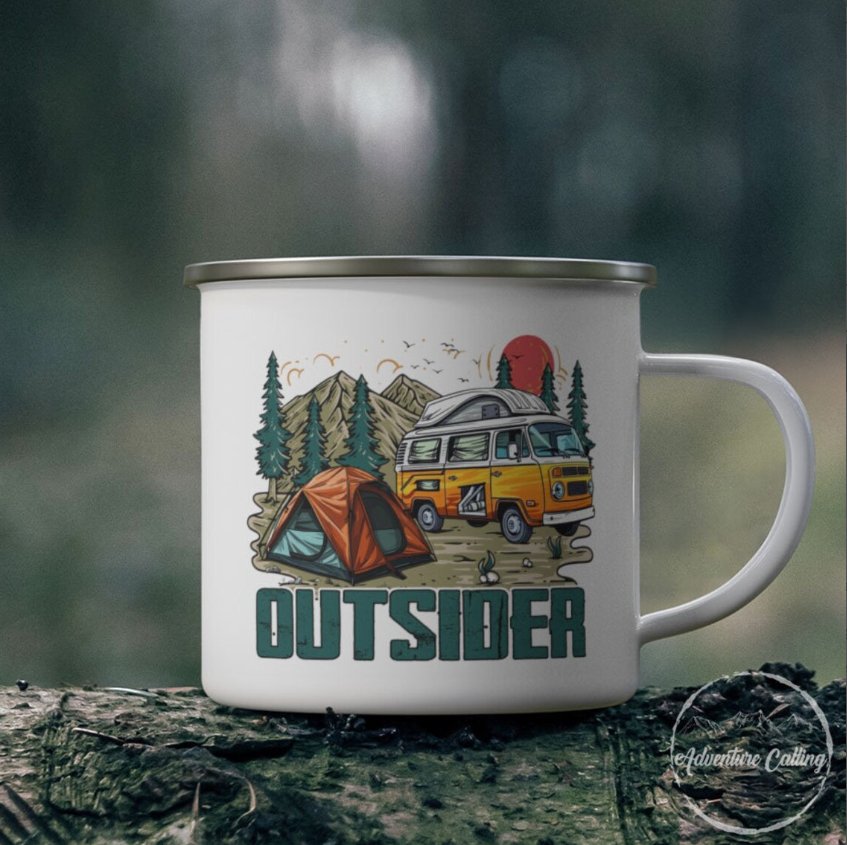How to prepare the wallpapering surface?
Analyzing the current condition of the wall
The old wallpaper has been stripped effectively - with more or less effort. Currently, it is time to have a closer look at the problem of the wall surface: the surface area requires to be tidy, firm and absorbing. We will show you techniques to ensure that you can inspect those qualities, as not every one of them is immediately noticeable to the nude eye.
Check Absorbency
Use the straightforward water test to learn whether a wall surface or ceiling is absorptive throughout. Use some water with a brush or roller. If water pearls show up, the surface is not sufficiently, or otherwise in any way, absorbent.
If the water is soaked up right away and the surface transforms darker, it is very absorbent. Additionally, highly absorbing surfaces often have hairline splits.
Check Firmness
What about the wall/ceiling - in other words: exactly how the firm is the surface?
If you relocate your hand over the surface area and your hand transforms white, or the wall/ceiling is sandy, you must act.
Use stress to learn how stable the surface is: Press your thumbnail against the wall/ceiling. If tiny bits come off or dent, the surface area is not solid enough for wallpaper.
Old paintwork or paint deposits that come forward after stripping wallpaper must also be checked for firmness. Use your cutter knife to reduce a cross in the surface area, put some sticky tape on it, press down firmly, and tear it off quickly. The surface area is insufficient if there is little paint on the video.
Distemper paint contains water-soluble adhesives and also requires unique therapy. There is a simple method to figure out whether you are dealing with distemper: Wet the area and move your fingertips over it. If it is distemper paint, rubbing it will undoubtedly lead to a material similar to wallpaper paste, and also, the colour will adhere to the fingers.
Check Cleanliness and Evenness of Colour
Smudges and also Spots on a wall can have various reasons. Dampness in the wall causes water or corrosion spots. Water discolourations are easily recognizable as they have visible edges; rust discolourations are red-brown and come off when touching the water. A straightforward means to determine natural rust stains is rubbing a moist fabric over the discolour. If it comes off, it is a rust tarnish.
You should evaluate the wall surface thoroughly. Can you see distinct colour distinctions or light/dark locations? Such abnormalities can be the outcome of numerous wall treatments; however, they usually appear as an outcome of using plaster plasterboard. Suppose you have picked top-notch non-woven or various other sorts of thin wallpaper. In that case, you must remedy the colour differences; otherwise, they will certainly be visible through the paper.
Check for Dampness
Dark patches, mildew spots or indicators of mould on the wall surface or ceiling are signs of dampness. The best way to determine the extent of the wet is to use a moisture meter. However, not every person has one or feels inclined to acquire one. Additionally, you can do the tin foil test, which will undoubtedly make recurring moisture noticeable. Place some tin foil on the damp location and leave it in place for 24 hours. Suppose there is condensation under the aluminium foil when you take it off. In that case, the wall surface must be dehydrated before treating it with any type of additionally. You could require to repeat the aluminium foil test.
Mould? Consult the experts!
If the moisture has brought about mould on your walls or ceilings, we advise speaking with an expert to find the precise reason and review the extent of the trouble. Without seeing the resource of the mould, the issue might reoccur, and short-term through-drying is just managing the signs rather than the reason. Nevertheless, if there are only little mould spots, you can utilize an industrial mould remover with disinfecting properties. Put on a safety breathing mask and handwear covers and ensure excellent airflow.
Check Smoothness
When you evaluate the wall surface or ceiling, small openings or fractures will be visible. Find out exactly how to deal with these under the header, Exactly how to fill little spaces and also cracks.
Experts move the beam of a hand-held lamp throughout the wall to check its surface area thoroughly and establish whether it is also.
Suppose the surface is badly damaged or shows, as an example. In that case, a combination of old paint layers and several repair services using various products, a particular preparation job has to be done to offer the perfect surface area for the wallpaper. Find more details under Unique treatments for badly damaged surfaces.
If the surface is slightly rough or matted, you can discover a range of items in DIY shops which are utilized to prepare the surface and also it out.
Subsequent Tasks The following actions of these instructions will tell you just how to prepare the surface to produce the perfect base for the wallpaper.
Filling small holes and cracks
Using filler to smooth them over if stripping the wallpaper has left the surface area with the odd minor blemish due to a reckless spatula job. You could also discover problems concealed under the old wallpaper, e.g. fractures in the plaster.
If existing holes are not to be re-used to hang wall shelving, pictures or other attractive objects after backgrounding, they also need to be loaded.
Prepared mixed fillers or powder fillers (to be mixed with water) can be found in any DIY shop. Each range has pros and cons, and you should decide based on particular problems.
Ready Mixed Fillers
- Paste in tubes or buckets
- Immediately usable, no mixing required
- Short drying out time, so you can work with the surface area quickly afterwards
- Multiple-use, so you can make use of staying fillers for your next job
Powder Fillers
- Ideal if you need significant amounts of fillers
- Easily mixed with water
- Can be used in a thick layer to fill openings as well as cracks
- Less expensive than ready blended filler
- Easy to sand down
Tips
Moisten the area you want to load before using filler. Do not use too large an amount and apply in an also as well as thin layer. Fill much deeper openings with paper first. After the filler has dried, smooth over with sandpaper until you achieve an entirely smooth surface area.
Applying a deep primer or thinned wallpaper paste
(depending on the outcome of the analysis)
Now that you have filled the small holes and fractures and the wall/ceiling is dry, the surface needs to be primed to ensure that it supplies the suitable base for wallpaper. Relying on the outcomes of the analysis, you will need to utilize either an in-depth guide or thinned wallpaper paste.
Choice of deep Primer according to the analysis of the wall
Pick a colourless in-depth guide if the wall surface is even in colour, and also, you do not intend to use non-woven or various other thin wallpapers that could not cover uneven colours. This deep Primer is also used to treat crumbly or chalky wall surfaces and ceilings. Moreover, it controls absorbency.
White, pigmented deep Primer is made used to even out colour differences. It has the same buildings as the colourless variant regarding absorbency and reinforcing the surface area. Pigmented deep Primer is additionally valuable for those incapable of completing the entire priming procedure in one go - an excellent option as the locations that have already been treated are visible when you continue the work. This is not the situation for a colourless in-depth guide once it has dried out.
What is Deep Primer?
Deep Primer is a liquid to thick undercoating that manages the surface's absorbency, enhances it, and evens out colour differences.
The primary distinction is between solvent-containing Deep Guide (SC) and solvent-free deep Primer (SF). Water-based solvent-free Primer is the recommended option for indoor walls as it is odourless and does not call for any specific protective measures throughout the application. Solvent-containing in-depth guide is primarily utilized for exterior walls due to its long-lasting vapours. A water-based solvent-free guide is a much better service as it does not secure the surface (and the setting, too).
Solvent-free Primer can be colourless (unpigmented) or coloured (pigmented) and is available in cylinders or containers. It is used with a paint roller with an adaptable telescopic deal.
Sandy or chalky surfaces
They need to be brushed down - or use an old vacuum cleaner - before you apply the in-depth guide. Make specific excellent air flow and wear a protective mask if essential.
If the surface has been painted with distemper paint
This requires to be cleaned off thoroughly before applying an in-depth guide. Old layers or residues of paint that are crumbly and do not supply an appropriate firm surface area for the wallpaper need to be removed without a trace before priming.
Stubborn stains
For stubborn discolourations like rust spots, we advise using a securing guide to secure the stains. If corrosion stains can be found without treatment, in contact with moisture or wallpaper paste, smudge, and (if you are utilizing slim wallpaper) will show up with the paper.
Special Case gypsum plasterboard
Light construction methods using plaster plasterboard have become increasingly preferred recently. They are also a lot more regularly used for expansions or modifications. As plaster plasterboard is very absorbent, extraordinary measures are essential when wallpapering. Suppose the surface area is not dealt with ahead of time. In that case, the wallpaper will be highly challenging to strip as soon as used, as doing so will usually imply that the plasterboard's paper layer will be duped, damaging the gypsum. Commonly, the edges are evened out with filler, and fixing the gypsum plasterboard likewise produces colour differences which will undoubtedly show up with thin or non-woven wallpapers and interfere with the overall look of the finished wall.
We recommend preparing gypsum plasterboard wall surfaces with white/pigmented deep Primers or other special primers for gypsum plasterboard. To ensure the wallpaper can quickly be removed later, you could use a liquid primer with a brush alternatively.
Correct application of deep Primer
Deep primers can be used in weakened or undiluted types. Please check the maker's directions on the tag. Deep Primer in a canister will undoubtedly need to be poured into a broad bucket. Some primers currently available in a container can be made use of immediately. It would help if you connected a wipe-off grid sideways of the container.
The simplest way to apply the guide is with a paint roller with telescopic management, allowing you to cover the whole wall without needing to use a ladder. Small rollers and tilted brushes with long handles are extremely valuable for challenging corners or remote areas (e.g., radiators).
First, thoroughly mix the deep Primer. After that, immerse the roll in it and remove excess Primer on the grid. Beginning on top of the wall surface, move the roller down. Remain to work in an upright manner. For the ceiling, it would undoubtedly serve to shield your head against decreases. When it comes to white/pigmented deep guide, it is essential to repaint away from the home window and the light.
To determine whether one layer of the in-depth guide is sufficient, inspect if the surface absorbs it correctly. If it dries swiftly, you will require to repeat the process until the wall surface and the ceiling is filled, i.e. they can not soak up any more in-depth guide. Depending on what deep guide item you are utilizing, you could be able to use another layer whilst the initial one is still wet, or you may need to wait till it has entirely dried out. Examine the item guidelines for more information.
Pre-treating surfaces with watered-down wallpaper paste (for very absorptive surface areas).
Extremely permeable surface areas like gypsum plaster and concrete can be pre-treated using watered-down wallpaper paste with a brush to develop a uniformly absorbing surface area. However, the surface area must be firm and stable; otherwise, the thinned-down paste will not have the desired impact. Likewise, if there are noticeable colour distinctions on the surface, pigmented deep guide or particular priming substances may be more suitable.
You will locate details relating to the dilution ratio for the wallpaper paste on the product packaging. Apply it similarly as you would certainly with deep Primer.
How to apply Lining Paper
Did you find some old paper when you stripped the wallpaper? In the olden days, using form was a common technique to supply the best surface area for wall surfaces and ceilings and ensure the brand-new wallpaper would undoubtedly adhere to the wall surface effectively. Today, we utilize can lining paper to accomplish the same result, and it is advised explicitly under beneficial and high-quality wallpapers. In other words: you can use lining paper, yet it's not a must.
You can get lining paper in rolls, similar to wallpaper. It can be found in the same widths as regular wallpaper and is usually white and without a pattern. Various strengths/grammages are readily available, as they must tie in with those of the decorative wallpaper. So: thin wallpaper needs just a thin lining paper, and thick wall surface décor requires thicker lining paper.
Using paper or non-woven lining, the wall's granulation is smoothed over, thus guaranteeing the flawless look of the decorative wallpaper. It develops an also light and absorbent surface. It protects against stress on the brink, which might otherwise occur throughout the drying out procedure and lead to voids in between specific sheets of wallpaper. Non-woven lining paper likewise retains its form, enables crease-free and easy application of the ornamental wallpaper, and smooths over little splits.
The paper lining is used to prepare for paper wall surface decor, and non-woven lining paper is used for non-woven wall surface décor. Find a lot more comprehensive information about using lining paper in our directions on paper wallpaper and non-woven wallpaper.
Make sure the sides of the lining paper do not merge with the decorative wallpaper's sides. The lining paper must be completely dry before applying the ornamental paper.
Special measures for damaged surfaces
In some cases, specifically in old structures, the appearance of the "nude" wall may be less than perfect and require particular measures to create the ideal surface.
Suppose the surface area resembles a jumble blanket, revealing indications of old paint layers or repair work made with various products, resulting in a combination of surface frameworks. In that case, we recommend to re-apply filler to the whole wall surface or ceiling, as failing to do so will undoubtedly result in the abovementioned jumble effect. Also, no wallpaper, nonetheless attractive, will be presented in one of the most favourable means.
Those situations need four actions, which we will define in fundamental terms as they should be entrusted to specialist artisans.
Sand down the Surface.
A (hand-held) orbital sander with revolving disks and rough paper (sandpaper, 60 grit) is used to treat the whole area to smooth out edges and bumps without harming the surface area. Also, sanding old paint layers prepares the surface area for the subsequent application of bonding primer.
Applying bonding primer on tricky surfaces
The following action is to apply a bonding guide on sanded-down "tricky" surfaces to provide the most practical base for the substance layer. You can acquire this liquid bonding guide in buckets prepared to use. The bonding primer is pigmented (white), so it neutralizes various surface colours. It can be utilized diluted or pure. After stirring the guide, it is put on the surface area with a paint roller in proper motions from top to bottom. After regarding 24 hr of drying out time, the filling up procedure can begin.
Large-Scale Surface Filling
Different tools are required to load extensive surface areas; other tools are needed, e.g. plastering trowels, spatulas in various dimensions, and filler in powder type. Filler for large-scale tasks is available in sacks. The powder is combined with water according to the maker's guidelines to attain a luscious, lump-free consistency. The filler is related to the whole wall surface or ceiling with a smudging trowel and then ravelled with a big spatula to develop an also surface area.
Sanding of the filled Surfaces
The final action is sanding the surface. A particular sander with lengthy care is used to make this process less complicated and for the more significant locations (fining sand paper 60 grit). A hoover can be attached to this to collect the dust. After this last action, the surface is flawlessly planned for the new wallpaper.
Also Read:- How to wallpaper the ceiling?
For interesting Home decor Posts, follow us on Instagram.



Leave a comment